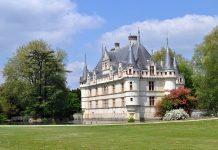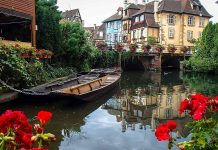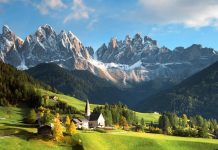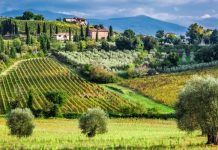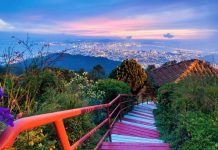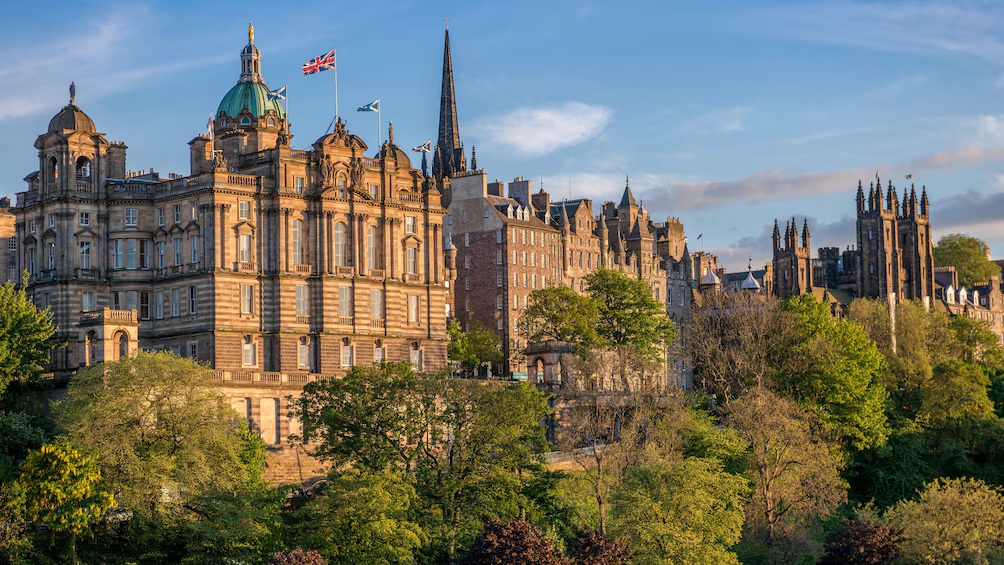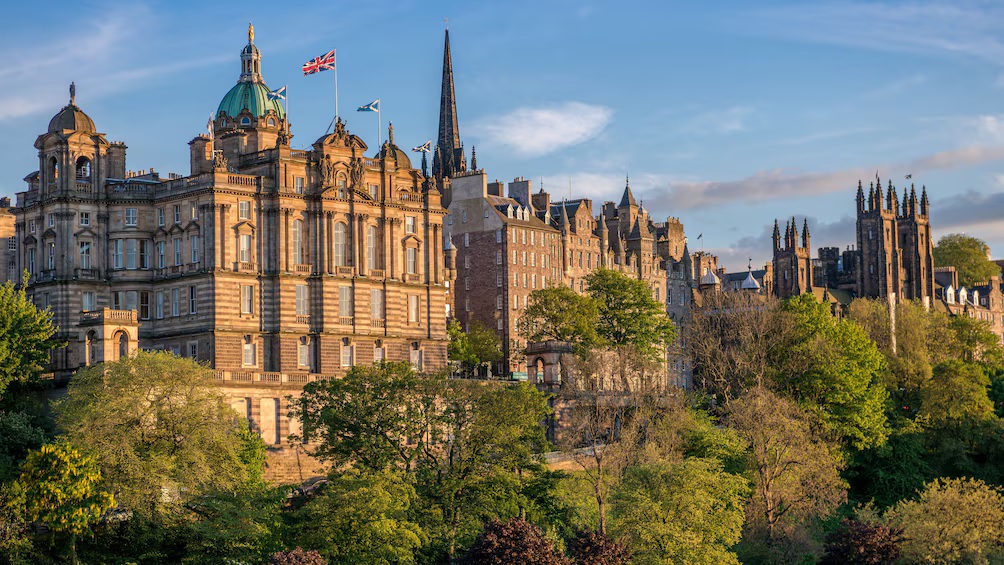
Beyond Edinburgh Castle: Uncover Haunted Closes, Festival Fever & the Soul of Scotland
Edinburgh Castle, perched majestically on its volcanic throne, is the undisputed icon of Scotland’s capital. Its imposing silhouette dominates the skyline, whispering tales of kings, queens, sieges, and crown jewels. But to truly grasp the vibrant, complex, and often spine-tingling soul of this ancient city – and indeed, Scotland itself – you must venture beyond the castle walls. Prepare to delve into shadowy closes, surrender to infectious festival energy, and discover the authentic heartbeat resonating in hidden corners and local haunts.
Descending into History: The Haunted Closes of the Royal Mile
The Royal Mile, stretching downhill from the Castle to the Palace of Holyroodhouse, isn’t just a street; it’s a multi-layered artery of history. Its most captivating secrets lie not on the broad thoroughfare, but within the narrow, often hidden alleyways branching off it – the closes and wynds. These atmospheric passages plunge you centuries back in time, offering a visceral connection to Edinburgh’s tumultuous past.
- Mary King’s Close: Perhaps the most famous (and infamous), this preserved underground warren is a time capsule frozen in the 17th century. Walking its uneven cobbles beneath the modern city is an eerie experience. Guides recount chilling tales of plague victims sealed within their homes, ghostly apparitions (like the sad little girl, Annie), and the harsh realities of life in a densely packed, unsanitary city. It’s not just about scares; it’s a profound historical immersion into resilience and tragedy.
- Brodie’s Close: Named after the notorious Deacon William Brodie – a respectable cabinetmaker by day and a daring burglar by night, said to be the inspiration for Robert Louis Stevenson’s Dr Jekyll and Mr Hyde. Walking through here evokes the duality of the city itself – respectability masking darker undercurrents.
- The Real Ghostly Atmosphere: Even beyond specific tours, simply wandering the closes as dusk falls is an experience. Dim lighting, uneven stonework, overhanging buildings (“lands”), and the sheer weight of history create an atmosphere ripe for spectral imaginings. Listen for echoes of footsteps, merchants’ cries, or the desperate whispers of plague-stricken residents. Explore Advocate’s Close, Anchor Close, or the narrow, steep Old Fishmarket Close for a sense of authentic, unvarnished Old Town atmosphere. These are the places where history feels tangible, sometimes uncomfortably so.
Surrendering to the Madness: Edinburgh’s Festival Fever
If the closes represent Edinburgh’s shadowy past, its Festival Fever embodies its vibrant, chaotic, and utterly captivating present. The city transforms into a global cultural epicentre, primarily during August, but with significant events year-round.
- The Edinburgh Festival Fringe (August): The world’s largest arts festival explodes across the city. Thousands of shows – comedy, theatre, dance, circus, cabaret, spoken word – fill every conceivable space: grand theatres, tiny pubs, university lecture halls, even disused shops and shipping containers. The Royal Mile becomes a pulsating artery of street performers, flyerers, and buzzing anticipation. It’s democratic, unpredictable, and utterly exhilarating. You might discover the next global superstar or witness a gloriously bizarre experimental piece. The energy is electric, infectious, and runs late into the warm(ish) summer nights.
- The Edinburgh International Festival (August): Running concurrently with the Fringe, the EIF presents a curated programme of high-calibre international theatre, opera, music, and dance in major venues. It offers a more structured counterpoint to the Fringe’s anarchic spirit.
- The Royal Edinburgh Military Tattoo (August): Against the breathtaking backdrop of the illuminated castle, massed pipes and drums, military displays, and international performers create a spectacle of precision, pageantry, and stirring music. The sound of hundreds of bagpipes echoing off the castle rock is uniquely Scottish and profoundly moving.
- Hogmanay (New Year’s Eve): Edinburgh hosts one of the planet’s most famous New Year celebrations. A massive street party, concerts, the iconic Loony Dook (a freezing dip in the Firth of Forth!), and the spine-tingling singing of “Auld Lang Syne” arm-in-arm with strangers create a uniquely Scottish blend of revelry and camaraderie. The festive spirit extends through the winter months with Christmas markets and lights.
- Beyond August & December: Look for the Edinburgh International Book Festival (August), the Science Festival (April), the Jazz & Blues Festival (July), and the International Film Festival (June) – proving the city’s cultural fire burns brightly year-round.
Discovering the Soul: Where Locals Live, Breathe, and Raise a Glass
Beyond the tourist throngs and festival madness lies the enduring soul of Scotland. To find it, step away from the Royal Mile’s main drag:
- Explore Distinctive Neighbourhoods:
- Stockbridge: Wander down charming streets with Georgian architecture, browse independent boutiques and antique shops, and visit the vibrant Sunday market by the Water of Leith. It feels like a village within the city.
- Leith: Edinburgh’s historic port, now revitalised with Michelin-starred restaurants (The Kitchin), buzzing pubs, the Royal Yacht Britannia, and a distinct maritime character. It’s grittier, real, and full of life.
- Dean Village: A hidden oasis just minutes from Princes Street. Picturesque 19th-century workers’ cottages cluster beside the tranquil Water of Leith, offering a peaceful escape and stunning views. Walk the Water of Leith pathway.
- Bruntsfield & Morningside: Leafy, affluent suburbs south of the city centre, known for elegant streets, excellent cafes, independent shops (like the legendary Cadies & Witchery Tours shop), and a relaxed, local vibe.
- Seek Out Authentic Pubs:
- Sandy Bell’s (Forest Road): A legendary folk music pub. Squeeze in, order a dram or a pint of local ale (try a Deuchars IPA or a Stewart’s), and let the spontaneous fiddle, guitar, and accordion sessions wash over you. The atmosphere is warm, welcoming, and genuinely Scottish.
- The Bow Bar (West Bow): A haven for whisky lovers with an incredible selection and knowledgeable, passionate staff. No music, no fruit machines – just conversation and appreciation of fine spirits.
- The Sheep Heid Inn (Duddingston): Claimed to be Scotland’s oldest pub (14th century), near Arthur’s Seat. Full of character, with a famous skittle alley and hearty pub fare. Feels like stepping back in time.
- Embrace the Landscape Within the City:
- Arthur’s Seat & Salisbury Crags: Hike this ancient volcano in Holyrood Park for panoramic views across the city, the Firth of Forth, and towards the Highlands. It’s a wild, elemental space right in the city centre, offering perspective and a connection to Scotland’s dramatic natural beauty.
- Calton Hill: Easier to climb, offering iconic views of the city skyline with its Athenian Acropolis monument and Nelson Monument. Perfect for sunset or sunrise.
- Indulge in Local Flavours:
- Go beyond haggis (though try it done well!). Sample fresh seafood in Leith, artisan cheeses from the Scottish Borders or the Islands, Stornoway black pudding, Cullen skink (smoked haddock soup), or a Forfar Bridie (savory pastry). Visit a local bakery for morning rolls or shortbread.
- Whisky: Explore the diversity beyond blends. Visit specialist bars (like the Scotch Malt Whisky Society) or take a tasting tour to appreciate single malts from different regions – the peaty power of Islay, the honeyed notes of Speyside, the maritime tang of the Islands.
Conclusion: The Spirit Endures
Edinburgh Castle is magnificent, a vital piece of the puzzle. But the true magic, the haunting whispers, the infectious energy, and the resilient, warm, and deeply cultural soul of Scotland lie beyond its ramparts. It’s in the chill that runs down your spine in a dimly lit close, the shared laughter erupting in a packed Fringe venue, the mournful wail of a lone piper on Calton Hill, the convivial buzz of a traditional pub, and the breathtaking sweep of wilderness rising from the city’s heart. So, venture forth. Explore the hidden wynds, lose yourself in festival crowds, seek out the local haunts, and listen closely. In doing so, you won’t just visit Edinburgh; you’ll feel the very pulse of Scotland.


